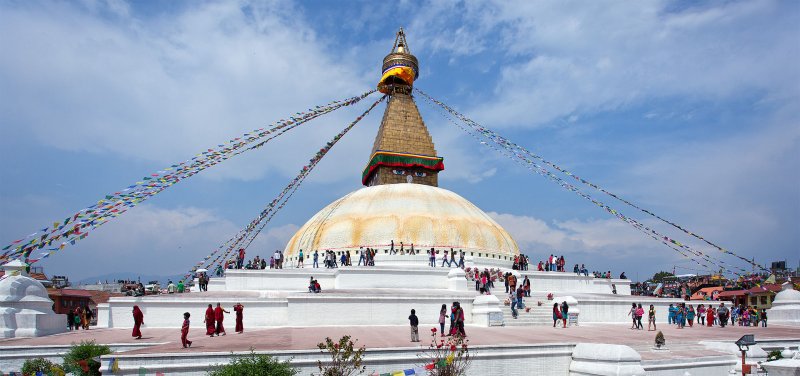 Visitors to Boudhanath in Kathmandu
Visitors to Boudhanath in KathmanduSource: https://commons.wikimedia.org/wiki/Category:Swayambhunath,_main_stupa#mediaviewer/File:Nepal_Kathmandu_Night_Swayambhunath_4.jpg
Author: Alexander Shafir

Author: Alexander Shafir

Swayambhunath is a Buddhist stupa on the western edge of Kathmandu. It sits on a site where 2500 years ago the legendary patriarch Manjushri found a lotus on an ancient valley lake. Swayambhunath has been an important Buddhist learning centre for centuries. On the four sides of the stupa are the famous painted eyes of the Buddha gazing in the four directions. Swayambhunath is also known as the Monkey Temple, due to the numerous macaques that roam the temple grounds.
Every aspect of Swayambhunath's architecture conveys a specific meaning. The stupa, which consists of a dazzling white bubble mound, similar to Boudhanath, represents creation. It bears striking similarities to the dagobas in Sri Lanka such as the Ruwanweliseya and Jetavana Dagoba.
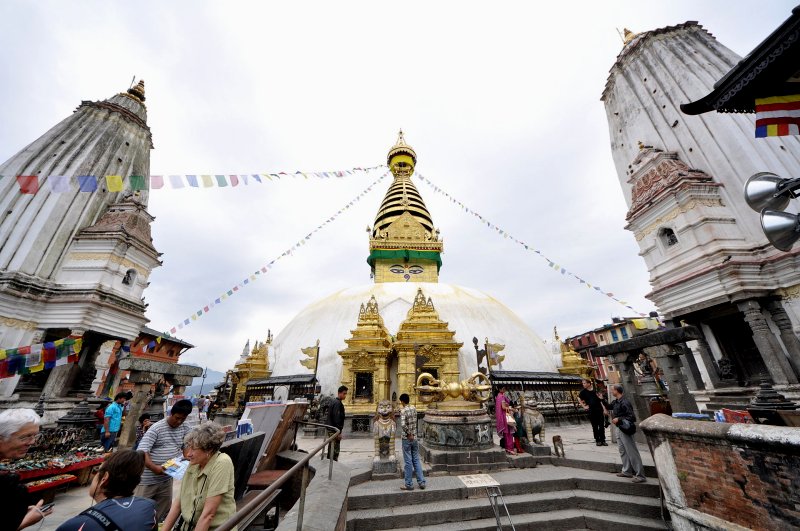 View of the main stupa of Swayambhunath and its surroundings
View of the main stupa of Swayambhunath and its surroundingsSource: https://commons.wikimedia.org/wiki/Category:Swayambhunath,_main_stupa#mediaviewer/File:Swayambhunath_1.JPG
Author: Alwok

Author: Alwok

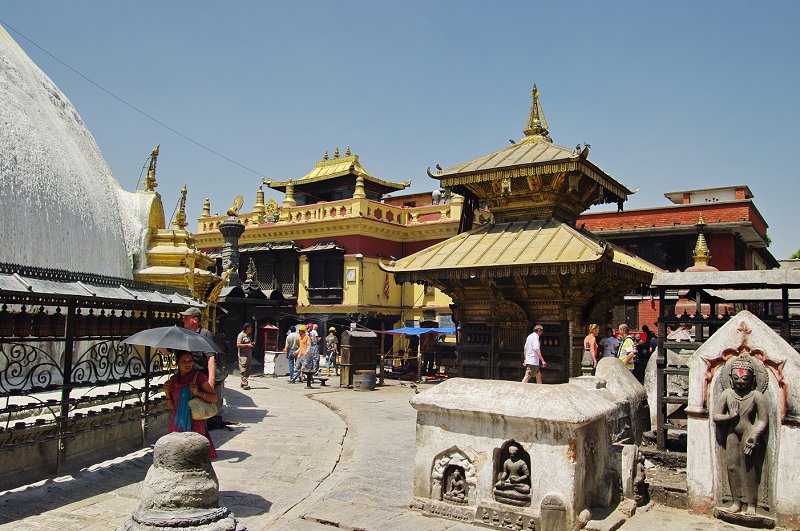 Ajima Temple at Swayambhunath
Ajima Temple at SwayambhunathSource: https://commons.wikimedia.org/wiki/Category:Ajima_Temple,_Swayambhunath#mediaviewer/File:NP-KTM-swayamb-harati-mandir.jpg
Author: Bgabel

Author: Bgabel

Niches with statues of meditating Buddhas represent the four basic elements: earth, fire, air and water. There are 13 gilded rings to the spire, and these represent 13 degrees of knowledge towards nirvana. The spire is festooned with multi-coloured prayer flags which flutter in the wind, releasing holy prayers. Devotees circumambulate the stupa clockwise. As they do that, they turn the prayer wheels. Some even prostrate in full reverence.
Swayambhunath is approached through a flight of 300 steps. Stone sculptures of animals and birds line these steps. All along the way, visitors encounter monkeys. According to legend, when Manjushiri cut his hair, each strand of hair became a tree in Swayambhunath, while each lice became a monkey.
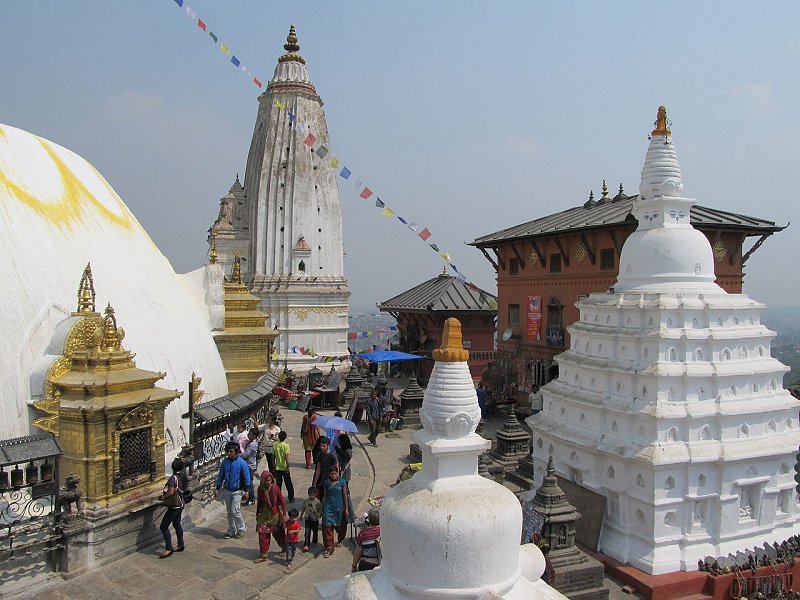 Shikara Pratappur Temple at Swayambhunath
Shikara Pratappur Temple at SwayambhunathSource: https://commons.wikimedia.org/wiki/Category:Shikara_Pratappur,_Swayambhunath#mediaviewer/File:Swayambunath0650.JPG
Author: Sundar1

Author: Sundar1

As one approached the main stupa, one is confronted by a jumble of other smaller stupas, called chaityas, and shrines. In a gilded cage inside the Swayambhunath is the eternal flame, guarded by statues of the goddesses Ganga and Jamuna.
Swayambhunath is recognised as one of the seven World Heritage Sites in the Kathmandu Valley. As with the other sites in the valley, Swayambhunath was placed on the List of Unesco World Heritage in Danger during the 27th session of the World Heritage Committee in July 2003, because the traditional elements of heritage had been partially or significantly lost since the time of inscription, resulting in a loss of authenticity of the property.
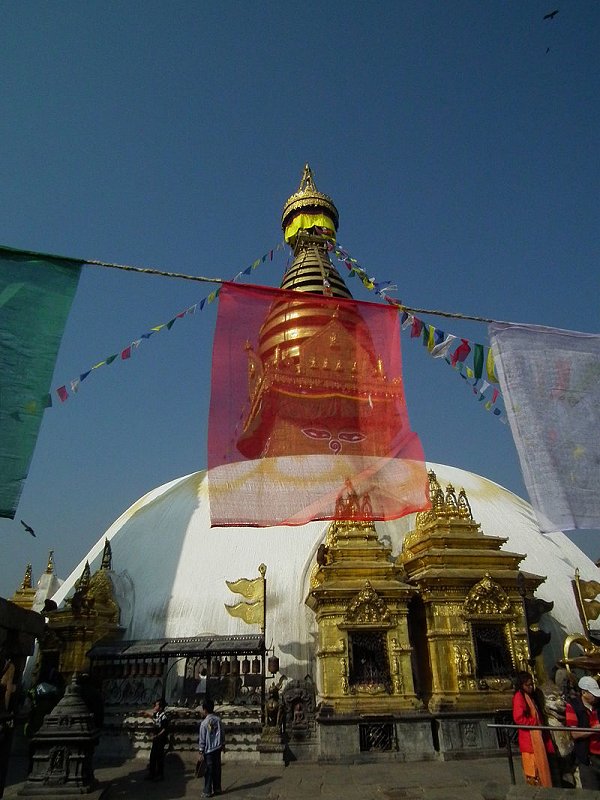 Swayambhunath
SwayambhunathSource: https://commons.wikimedia.org/wiki/Category:Swayambhunath,_main_stupa#mediaviewer/File:Soyambhu_Kathmandu_Nepal_(8530068242).jpg
Author: S Pakhrin

Author: S Pakhrin

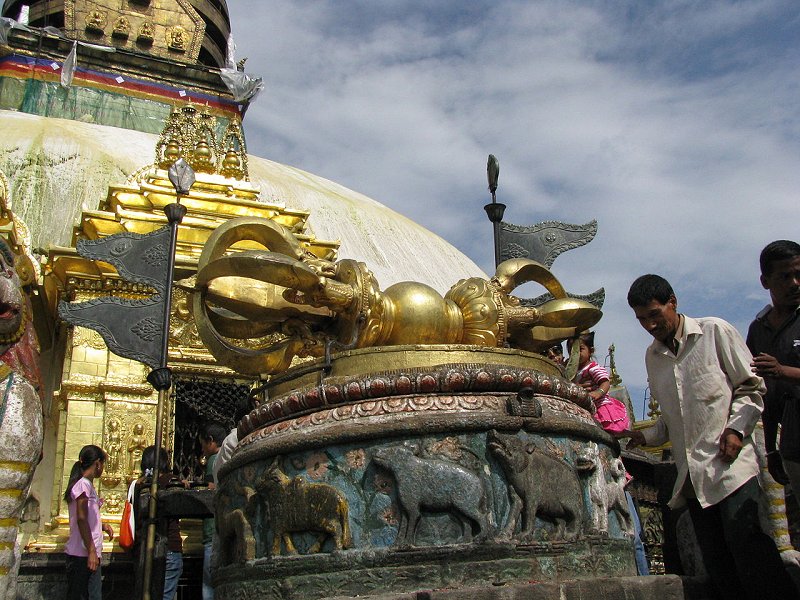 Decorative instruments at the base of Swayambhunath
Decorative instruments at the base of SwayambhunathSource: https://commons.wikimedia.org/wiki/Category:Swayambhunath,_main_stupa#mediaviewer/File:Soyambhu_Kathmandu_Nepal_(80)_(5111895879).jpg
Author: S Pakhrin

Author: S Pakhrin

 Latest updates on Penang Travel Tips
Latest updates on Penang Travel Tips
 Map of Roads in Penang
Map of Roads in Penang
Looking for information on Penang? Use this Map of Roads in Penang to zoom in on information about Penang, brought to you road by road.
Copyright © 2003-2025 Timothy Tye. All Rights Reserved.

 Go Back
Go Back